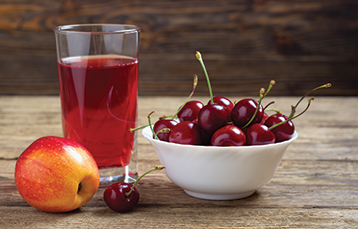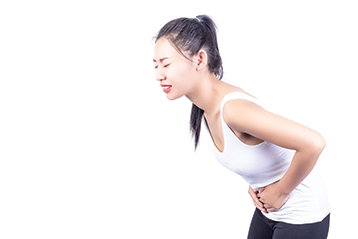By Sandra Bolan
There is nothing worse than going out to dinner with your friends and suddenly, you’ve got to go – like get-out-of-my-way-and-cut-the-bathroom-line kinda go.
If this has happened to you, you may be part of the one million Americans who suffer from irritable bowel syndrome (IBS).
IBS effects the large intestine and is a chronic, long-term condition without a cure. It is difficult to diagnose, as it is identified by exclusion. In short, IBS is the abnormal function of the bowels, which results in a group of symptoms.
IBS is divided into two strains: IBS-C (constipation) and IBS-D (diarrhea). Symptoms of IBS-D include the sudden need to have a bowel movement; abdominal pain or discomfort; flatulence; loose stools; frequent stools and a feeling of being unable to empty your bowels.
IBS-C symptoms consist of hard or lumpy stools; straining while you go; infrequent stools; bloating; flatulence; abdominal distension and loss of appetite.
Causes and Risk Factors
IBS is not contagious, inherited or cancerous.
Although it’s exact cause remains unknown, factors that may play a role include muscle contractions in the intestine and a poor connection between the brain and intestines, which causes the body to overreact. Other causes may be intestinal inflammation; gastroenteritis; too much bacteria in the intestines or a change in the stomach’s good bacteria.
Diagnosis
Since the diagnosis of IBS is one of elimination, there is a multitude of tests your doctor may subject you to. Some of them include a colonoscopy and X-ray or CT-scan. Laboratory tests you may undergo are for lactose intolerance; bacterial overgrowth as well as an endoscopy or stool check.
The reason why a doctor would make you take a lactose intolerance test is because lactase is an enzyme required to digest sugar found in dairy. If you don’t produce enough lactase, your symptoms will mimic IBS.
A stool exam will rule out parasites or bacteria.
Treatment
There is no magic pill to cure IBS. For people who suffer from either strain, it’s a matter of relieving the symptoms. There are some medications available, but the most prevalent treatment is to avoid IBS triggers such as alcohol, caffeine, raw fruit, some vegetables and gluten. IBS sufferers should also drink lots of water, exercise regularly, get enough sleep and reduce stress.
If you have IBS-C, adding fiber supplements may help. IBS-D sufferers can try taking Immodium.
The FODMAP Diet
One treatment for both strains of IBS that some people find success with is the FODMAP diet. FODMAP stands for Fermentable Oligosaccharides, Disaccharides, Monosaccharides and Polyols. Researchers have found the small intestine does not absorb FODMAPs very well. “The increased fluid and gas in the bowel leads to bloating and changes in the speed with which food is digested,” according to Harvard Health Publishing. “This results in gas, pain and diarrhea. Eating less of these types of carbohydrates should decrease these symptoms.”
The purpose of this diet is to only limit the problematic foods in each category, not eliminate them.
You should eat less of these foods:
Lactose. Cow’s milk, yogurt, pudding, custard, ice cream, cottage cheese, ricotta cheese and mascarpone.
Fructose. Apples, pears, peaches, cherries, mangoes, pears and watermelon.

Sweeteners, such as honey and agave nectar
Products with high fructose corn syrup.
Fructans. Artichokes, asparagus, brussels sprouts, broccoli, beetroot, garlic and onions, as well as wheat and rye.
GOS (Galactooligosaccharides) foods. Chickpeas, lentils, kidney beans, soy products and broccoli
Polyols. Apples, apricots, blackberries, cherries, nectarines, pears, peaches, plums and watermelon, along with cauliflower, mushrooms and snow peas
Artificial sweeteners. Sorbitol, mannitol, xylitol, maltitol and isomalt found in sugar-free gum and mints, as well as in cough medicines and drops.
You should eat more of these foods:
Dairy. Lactose-free milk, rice/almond/coconut milk, lactose-free yogurt, hard cheeses such as feta and brie.
Fruit. Bananas, blueberries, cantaloupe, grapefruit, honeydew, kiwi, lemon, lime, oranges and strawberries
Vegetables. Bamboo shoots, bean sprouts, bok choy, carrots, chives, cucumbers, eggplant, ginger, lettuce, olives, parsnips, potatoes, spring onions and turnips.
Protein. Beef, pork, chicken, fish, eggs and tofu
Nuts/seeds (limit to 10 to 15 each). Almonds, macadamia, peanuts, pine nuts and walnuts
Grains. Oat, oat bran, rice bran and gluten-free pasta.
It’s important to speak with your doctor to find out what treatments are right for you. Before going on any diet, seek the help of a professional dietician, nutritionist or gastroenterologist to determine whether it is right for you as well as how best to implement it.




